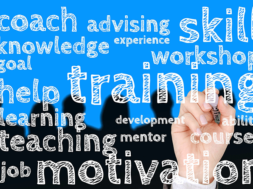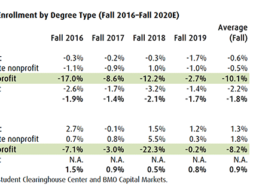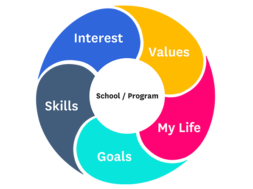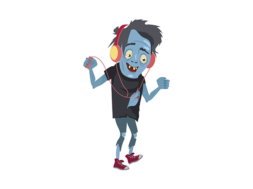
A New Strategic Approach to Coaching is Helping Admissions Teams Overcome Post-Pandemic Challenges
By Shari Tishman, Head of Marketing, VoiceOps
Even before the COVID-19 pandemic, the recruiting landscape for student enrollment was becoming ever more complex. The proliferation of digital platforms like TikTok and Twitch, the rising costs of education, and more prospective students interested in creating non-linear education and career paths are a few of the complexities.
The pandemic exacerbated and accelerated these trends, particularly in terms of remote learning on the student side and a remote workforce on the admissions team side, not to mention declining enrollment overall.
According to the National Student Clearinghouse, there were 600,000 fewer students attending U.S. colleges in spring of 2020 versus 2019. Surprisingly, community colleges, career colleges, and 2-year programs overall were particularly hard-hit, going against most expectations and typical trends during recession times.¹
Career education curricula can be tough to translate to online learning, so the difficulty these programs have had adapting makes sense. For a lot of schools, it probably feels like they’re finally starting to emerge from 18 months of crisis management and uncertainty. There’s no clear picture yet of what the next few years will look like in terms of student interest and enrollment trends.
The truth is, however, no matter what the trends or how complex the recruiting landscape becomes, the admissions funnel narrows and always leads to the admissions team interacting directly with students to get them to enroll. The challenges described above make it even more important for an admissions team to be able to provide a consultative, personalized experience when speaking with students.
The current challenge facing admissions teams
The impact of the pandemic has resulted in a resurfacing of traditional tactics like calling students directly since in-person interaction hasn’t been possible and there is so much digital noise. Students seem to be responding to the much more personal approach of a 1:1 conversation, versus mass marketing or even large campus tours.²
These conversations are (and have always been) the keystone element in the admissions process. It’s even more critical now that the performance of admissions teams in terms of converting these conversations into enrollments is not only stable and predictable, but that teams on the phone can drive growth when other areas become volatile.
And let’s not forget the ever-present pressure placed on admissions teams when it comes to compliance. Now that “normal” is a thing of the past, admissions teams are even more under the microscope to ensure compliance with regulatory rules. Many teams resort to providing admissions professionals with scripts to ensure they’re giving students accurate, compliant information.
These scripts, while important, become another challenge to creating authentic, personalized conversations between admissions team members and students.
Let’s take a moment and ask ourselves – is my team equipped, right now, to be that engine for growth? Can I count on them?
Here’s an important perspective: Career services are seen as a key differentiator for schools, one that helps ensure its students are ready for success and that can help distinguish programs for potential students.³ Students are looking for this sort of consultative guidance right from the beginning, so the admissions team needs to be prepared to provide it. At its heart, this is about making sure your admissions teams are having great conversations – and the right conversations – with students to provide an incredible experience and get them enrolled.
Unfortunately, having great conversations is not easy, in fact, it’s a skill that takes most people significant training and practice to acquire. Therefore, among admissions teams, we often see performance gaps between top and bottom admissions professionals that form the bell curve shape. This means a lot of poor conversations happening with students and a lot of missed enrollment opportunities.
When admissions professionals aren’t well enabled to have great conversations, not only does their performance suffer, but attrition tends to go up as the team gets frustrated. All of this results in a poor student experience.
The solution is effective coaching
Coaching is the way to help admissions professionals have better conversations. As successful admissions teams can attest, these calls are not “cookie cutter” situations that can be solved with some keyword tags and some chat scripts. In order to provide personalized, authentic guidance for students to get them enrolled in the right program, admissions teams need to gain deep knowledge and skills so they know what they need to be saying no matter what twists and turns the conversation takes. Consistent coaching is how to get admissions professionals to the point where they can consistently do that.
With effective coaching, that performance gap mentioned earlier shrinks, and the bell curve shifts, unlocking higher enrollment rates as well as a host of other great results like increased productivity, faster ramp times, and reduced attrition. Coaching – when done effectively – can also help the admissions team stay in compliance, without heavy reliance on scripts. Coaching teams to have better conversations is good for students, good for team members, and good for the institution.
Data shows that coaching leads to higher conversion rates, especially when it is consistent and effective.⁴ It’s not that easy, though, and most organizations – even those that recognize the importance of coaching and have invested significantly in it – are struggling to show ROI. This means that despite spending a lot of time and money on it, most existing coaching programs fail to produce better enrollment rates, smaller performance gaps among admission professionals, or better experiences for students.
The key to effective coaching
Tackling the challenges with conversations and quality coaching requires two important elements: a strong coaching strategy and effective coaching technology. These two pieces make up coaching enablement, and most teams don’t have them.
Coaching shouldn’t be something done only during onboarding or when there’s a performance issue.
Coaching should be ongoing and consistent for every admissions team. There’s always room for improvement, so you should always be coaching.
Coaching enablement, fueled by a strong strategy and effective technology, provides the framework and capability to do that.
When coaches are well enabled, coaching becomes a consistent, repeatable program that creates constant behavior change and improvement across the admissions team. When admissions professionals do more of what they should be doing when interacting with students, performance and conversion will go up.
The framework for coaching enablement
Strategy
In the strategy stage, leadership identifies the business objectives and metrics for the program. This could be increased enrollment rates, better compliance, lower turnover among the team, faster onboarding time for admissions professionals, etc. This is also when teams must assess the current state of the coaching program (such as it is) and determine what the coaching workflow should look like to maximize team performance.
Finally, admissions leaders often work with consultants or partners to map successful conversations with students to key skills and behaviors that drive the business objectives. These key behaviors become the foundation for the coaching program that will be executed in the next stage.
Execution
To execute a strategic coaching program effectively, it’s critical for coaches to provide consistent feedback on key behaviors to admissions teams. This involves accurately tracking admissions professionals’ adherence to these behaviors across all recorded calls, and surfacing opportunities for improvement as well as reinforcing successes.
Ideally this consistent, focused coaching can be done asynchronously to maximize everyone’s time. The coach can address performance trends with the admission professional during 1:1 sessions, leveraging the data collected via asynchronous coaching to reinforce areas for improvement.
Evaluation
The evaluation stage really begins as soon as execution does, and continues perpetually. Periodically, leadership assesses adherence to the coaching workflow as well as behavior adherence trends among the admissions team. This adherence data is then correlated with trends in the key business objectives identified during the strategy stage.
The team will then determine how to adjust and improve the key behaviors and the coaching workflow to address weaknesses in performance, compliance, and business results. And everyone will keep on coaching!
The focus on behavior adherence and the “strategy, execution, and evaluation” stages of coaching enablement are what’s missing from existing coaching programs at many institutions. Even those that recognize the importance of coaching haven’t found a way to effectively unlock this cycle. This is where a behavior-based coaching enablement technology platform can be hugely helpful.
Done right, building a coaching enablement program with a strong strategy and effective technology will create a cascading effect of better conversations, stronger relationships, and improved performance.
This can lead to higher enrollment rates, greater productivity across admissions teams, and an incredible student experience.
Coaching enablement will transform the admissions team into a strategic force for the institution, able to adapt to shifting trends and unpredictable economic and societal forces to keep enrollment strong and schools competitive. Most importantly, students will have the support they need and deserve while deciding which education opportunity is right for them.
Resources
-
- Overview: Spring 2021 Enrollment Estimates. National Student Clearinghouse Research Center. https://nscresearchcenter.org/current-term-enrollment-estimates/
- Colleges get a crash course in digital recruiting during the pandemic. Higher Ed Dive. 2021. https://www.highereddive.com/news/colleges-get-a-crash-course-in-digital-recruiting-during-the-pandemic/594236/
- Career Services Will Define the Next Big Book in College Enrollment. Forbes. 2020. https://www.forbes.com/sites/brandonbusteed/2020/12/21/career-services-will-define-the-next-big-boom-in-college-enrollment/?sh=31f424e2145e
- Smarter call-center coaching for the digital world. McKinsey & Company. 2018. https://www.mckinsey.com/business-functions/operations/our-insights/smarter-call-center-coaching-for-the-digital-world#
SHARI TISHMAN is Head of Marketing at VoiceOps, a coaching enablement software company that unlocks millions of dollars in revenue for companies while improving the quality of conversations between customers and representatives. She has 15 years of experience building and leading marketing and communications programs at companies in the nonprofit and tech sectors. Her primary focus, which she’s continuing to pursue with VoiceOps, is on the intersection of technology and purpose to make the world better.
Contact Information: Shari Tishman // Head of Marketing // VoiceOps // 978-621-3396 // shari@voiceops.com // https://voiceops.com/











